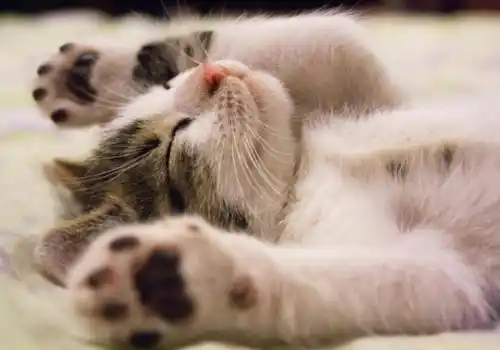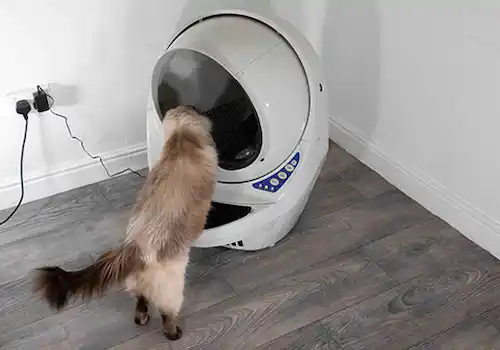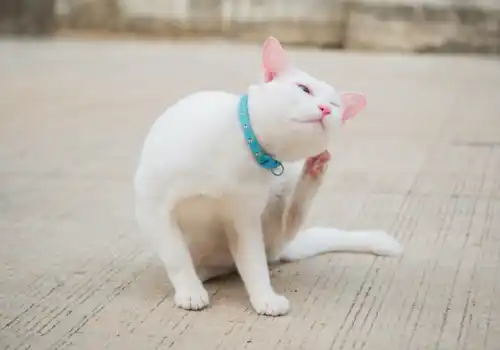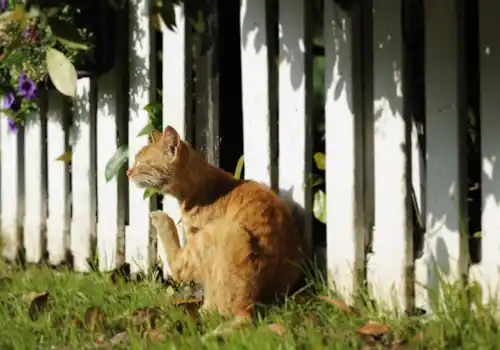When a cat has a fit, it is scary. Here's how to handle a cat seizure and what is feline epilepsy
Can cats get epilepsy? Yes, they can. Here, we look at the condition and how owners can manage it.
What is epilepsy in cats?
Epilepsy isn’t an actual disease but is a condition where an animal (or human) has multiple seizures, fits, or convulsions. A seizure is when the brain ‘misfires’ and sends out-of-sync signals around the body causing uncontrollable movements, such as shaking and twitching.
There are many causes of seizures and having a single seizure doesn’t mean your cat has epilepsy, but it does warrant a trip to the vet’s to find out why it happened.
Is my cat having a fit?
Seizures in cats are either ‘generalised’ or ‘partial’ — the difference being how much of the brain is showing seizure activity. Generalised seizures affect more of the brain, whereas partial seizures (also called focal seizures) affect only one area.
A generalised seizure is probably the most easily recognisable as cats exhibit the signs most of us associate with having a fit. During a generalised seizure, cats:
- Collapse suddenly.
- Arch their head and neck backwards.
- Seem completely unaware of their surroundings.
- Have rigid limbs.
- Shake their legs or ‘paddle’ in a running movement.
- Twitch their face, salivate, and often chew.
- Pass urine and/or faeces without realising they have done so.
Generalised seizures in cats usually last between one and three minutes. If your cat has another seizure soon after recovering from the previous one, it’s called a cluster seizure. Some cats don’t have this short recovery period between seizures and have one, long continuous seizure. This is called status epilepticus and is a medical emergency. If your cat is having a seizure lasting more than five minutes, call your vet immediately. Cats having cluster seizures or those in status epilepticus need to see a vet as soon as possible so they can receive medication to stop the seizure.
A partial (or focal) seizure affects one part of the brain and is a little trickier to spot. Cats having a partial seizure may only move one part of their body, and these movements can be subtle. Common signs of a partial seizure include:
- Facial twitching, such as excessive blinking of the eyelids.
- Growling/making noises.
- Salivating.
- Jerky, abnormal body movements.
- Snapping or biting the air or imaginary objects.
- Tail chasing.
- Unexplained aggression.
Cat has a fit
You may start to recognise when your cat is about to have a seizure by changes in their behaviour. This pre-ictal phase is when their brain starts to misfire but isn’t yet having a full-blown seizure. Cats become clingy and nervous and may turn their head frequently, despite there being nothing to look at.
Once the seizure ends, it takes a while for your cat’s brain activity to return to normal. During this post-ictal phase your cat may seem very tired and depressed or go the other way and become over-excited. It’s also common for cats to eat and drink more during this time. Cats may also have temporary vision problems and seem uncoordinated. Sometimes the post-ictal phase can last up to 48 hours after the seizure ended.
What to do if your cat has a fit
Watching your cat have a seizure can be a frightening experience. You can best help your cat by keeping them, and you, safe until the seizure ends. Avoid picking your cat up to comfort them (a hard instinct to ignore!) as they often inadvertently bite. Make the area around them as safe as possible — the exception to touching them is if you need to move your cat away from dangers such as the top of the stairs.
Keep the room cool, quiet, and dark (close the curtains, turn off the TV, and ask family members to wait elsewhere). Set a timer and record how long the seizure lasts and call your vet if it’s lasting longer than five minutes. Your veterinary team can even stay on the phone to talk you through what’s happening and then arrange to see your cat when it’s safe to move them.
What causes seizures in cats?
Seizures in cats happen if there are changes within the brain itself (intracranial) or in response to changes elsewhere in the body (extra cranial).
Intracranial causes
Intracranial causes of seizures are either due to diseases that change the brain’s structure or ‘idiopathic epilepsy’ (no disease is present). Diseases that damage and change the brain include:
- Brain tumours — cats with brain tumours usually display other symptoms too, such as behavioural changes, head pressing (against walls or in corners), vision problems, and uncoordinated movements (falling and stumbling).
- Brain inflammation (encephalitis) caused by infections, such as feline infectious peritonitis (FIP), toxoplasmosis, feline leukaemia virus (FeLV), and feline immunodeficiency virus (FIV).
- Head trauma (brain damage) or strokes (compromise the brain’s blood supply).
Idiopathic epilepsy is when brain cells (neurons) misfire despite the cat having an otherwise healthy brain and body. Most cats with idiopathic epilepsy tend to start having seizures at a young age.
Extra-cranial causes
Extra-cranial causes of seizures could be anything outside the brain and central nervous system. Chemical imbalances due to organ malfunction (metabolic diseases) or contact with harmful substances (including ingested toxins) can cause brain neurons to misfire leading to a seizure.
Metabolic diseases that may causes seizures are:
- Blood sugar abnormalities (complications with diabetes mellitus).
- Very low calcium levels (hypocalcaemia).
- Liver and kidney disease.
- High blood pressure (hypertension).
- Heart problems.
Toxins that can cause seizures include:
- Dog flea treatments containing permethrin — these are highly toxic to cats. Be aware if your cat shares a bed with your dog soon after treatment.
- Rodent poisons and slug bait.
- Some fertilisers.
- Anti-freeze (ethylene glycol).
Why has my cat had a fit?
Diagnosing your cat with idiopathic epilepsy is a process of elimination. Your vet will need to rule out all the other causes of seizures first. Some cats have only one seizure in their lifetime whereas others have regular seizures that increase with frequency and intensity over time.
Keeping a record of your cat’s seizure activity is a great way to jog your memory and help you answer your vet’s questions such as:
- How old was your cat when the seizures began?
- How often are the seizures?
- How long does each seizure last?
- Are they getting worse?
- Have you noticed any triggers to your cat’s seizures? (Most cats have seizures while at rest but some start after eating or exercise).
- Does your cat have any other signs of illness?
- What medications, flea treatments, or supplements has your cat had recently?
- Has your cat had access to any known toxins?
Alongside a detailed history, your cat will likely need further tests to help work out why they’re having seizures. Blood tests check for organ abnormalities, hormone imbalances (such as hyperthyroidism), and changes within blood cells. Your vet will also carry out a full physical examination including a detailed neurological assessment and measuring your cat’s blood pressure.
If your cat needs further investigations, your vet may refer them to a neurologist (vet who specialises in the brain and nervous system). Imaging — usually an MRI scan — will show any brain damage or tumours. A CSF tap (examination of cerebrospinal fluid from around the brain and spinal cord) can aid diagnosis if your cat has an infection. The vet collects this sample via a small needle in your cat’s neck (don’t worry, your cat will be asleep under a general anaesthetic for this.)
Is epilepsy treatable in cats?
Yes, it is, although it’s not always straightforward. The first step is to manage the underlying cause, if this is possible. If your cat has idiopathic epilepsy (seizures with no underlying cause) or irreversible structural brain changes then your cat will likely need anti-epileptic medication for life. It may be your cat isn’t yet ready for treatment if their seizures are very far apart or they’ve only had one seizure — your vet will guide you with this.
A variety of anti-epileptic medications are available and finding the right one at the correct dose for your cat may take a little while. Once your cat is stable on medication, they’ll need regular vet checks and blood tests to check their general health and gauge whether any dose change is necessary.
A few tips for medicating cats with epilepsy:
- Always give the correct dose at the correct time — varying levels can lead to ‘break through’ seizures.
- Never suddenly stop your cat’s medication — this can cause a seizure. If your cat has been free from seizures for a year, your vet will advise how to slowly and safely reduce their medication.
- Anti-epileptic medications are powerful — keep them away from children and other pets.
- Some supplements and complimentary treatments can alter how these medications work —make sure you tell your vet about anything else you give your cat.
Over time, epilepsy can become refractory to medication (it stops working and your cat has seizures). Don’t despair if this happens as there are many combinations of medications for your cat to try. Your veterinary team know your cat’s medical history and can give specific advice about epilepsy or any other health conditions. Always give them a call if you’re worried.







